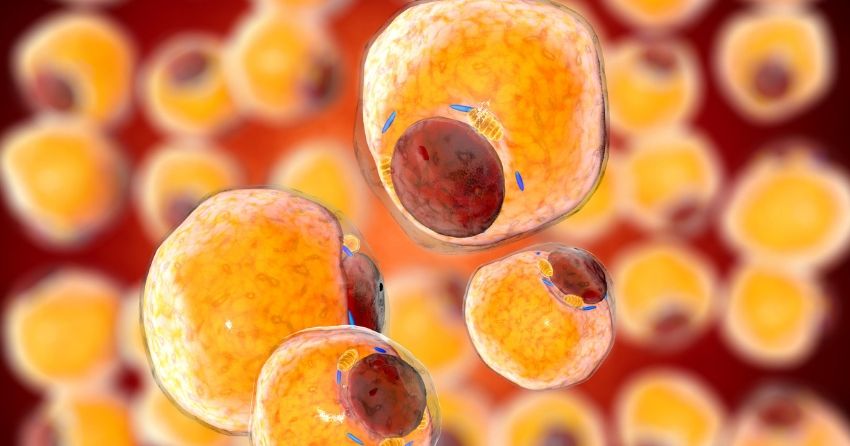Fat Tissue Surrounds Skeletal Muscle to Accelerate Atrophy in Aging and Obesity

Researchers here show that the fat tissue surrounding skeletal muscle that is observed in older and obese individuals contributes to declining muscle mass and strength. The most compelling evidence arises from transplantation of fat tissue between mice, showing that it produces harmful effects. The researchers further suggest that cellular senescence is an important factor in this process, which dovetails nicely with what is known of the way in which excess visceral fat tissue accelerates aging. The presence of larger than usual amounts of visceral fat increases the number of lingering senescent cells in the body, and senescent cells broadly disrupt tissue structure and function via their inflammatory signals. The accumulation of senescent cells with age is now accepted as a contributing cause of aging, and an energetic industry aiming to produce senolytic therapies capable of selectively destroying these cells is presently in its initial stages of growth.
This article appeared first on FightAging.org
Sarcopenia due to loss of skeletal muscle mass and strength leads to physical inactivity and decreased quality of life. The number of individuals with sarcopenia is rapidly increasing as the number of older people increases worldwide, making this condition a medical and social problem. Some patients with sarcopenia exhibit accumulation of peri-muscular adipose tissue (PMAT) as ectopic fat deposition surrounding atrophied muscle. However, an association of PMAT with muscle atrophy has not been demonstrated.
Here, we show that PMAT is associated with muscle atrophy in aged mice and that atrophy severity increases in parallel with cumulative doses of PMAT. We observed severe muscle atrophy in two different obese model mice harboring significant PMAT relative to respective control non-obese mice. We also report that denervation-induced muscle atrophy was accelerated in non-obese young mice transplanted around skeletal muscle with obese adipose tissue relative to controls transplanted with non-obese adipose tissue.
Notably, transplantation of obese adipose tissue into peri-muscular regions increased nuclear translocation of FoxO transcription factors and upregulated expression of FoxO targets associated with proteolysis (Atrogin1 and MuRF1) and cellular senescence (p19 and p21) in muscle. Conversely, in obese mice, PMAT removal attenuated denervation-induced muscle atrophy and suppressed upregulation of genes related to proteolysis and cellular senescence in muscle. We conclude that PMAT accumulation accelerates age- and obesity-induced muscle atrophy by increasing proteolysis and cellular senescence in muscle.





